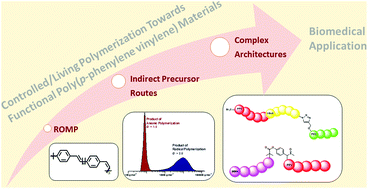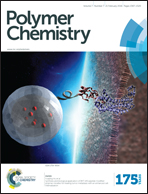Controlled/living polymerization towards functional poly(p-phenylene vinylene) materials†
Abstract
Poly(p-phenylene vinylene)s (PPVs) are an important class of highly fluorescent polymeric semiconductor materials. Despite their somewhat declining use in optoelectronic applications, PPV synthesis routes were in recent years significantly improved towards controlled/living polymerization. In this way, nowadays well-defined PPV structures that can be implemented in advanced polymer structures have become accessible, finding a potential application in new fields of research. This review summarizes the advances made and the types of polymers that have recently become available. Most notably, two polymerization approaches are compared, living polymerization towards well-defined PPVs via ring-opening metathesis polymerization (ROMP) and chain-transfer radical and anionic polymerization in the so-called sulfinyl precursor polymerization route.


 Please wait while we load your content...
Please wait while we load your content...